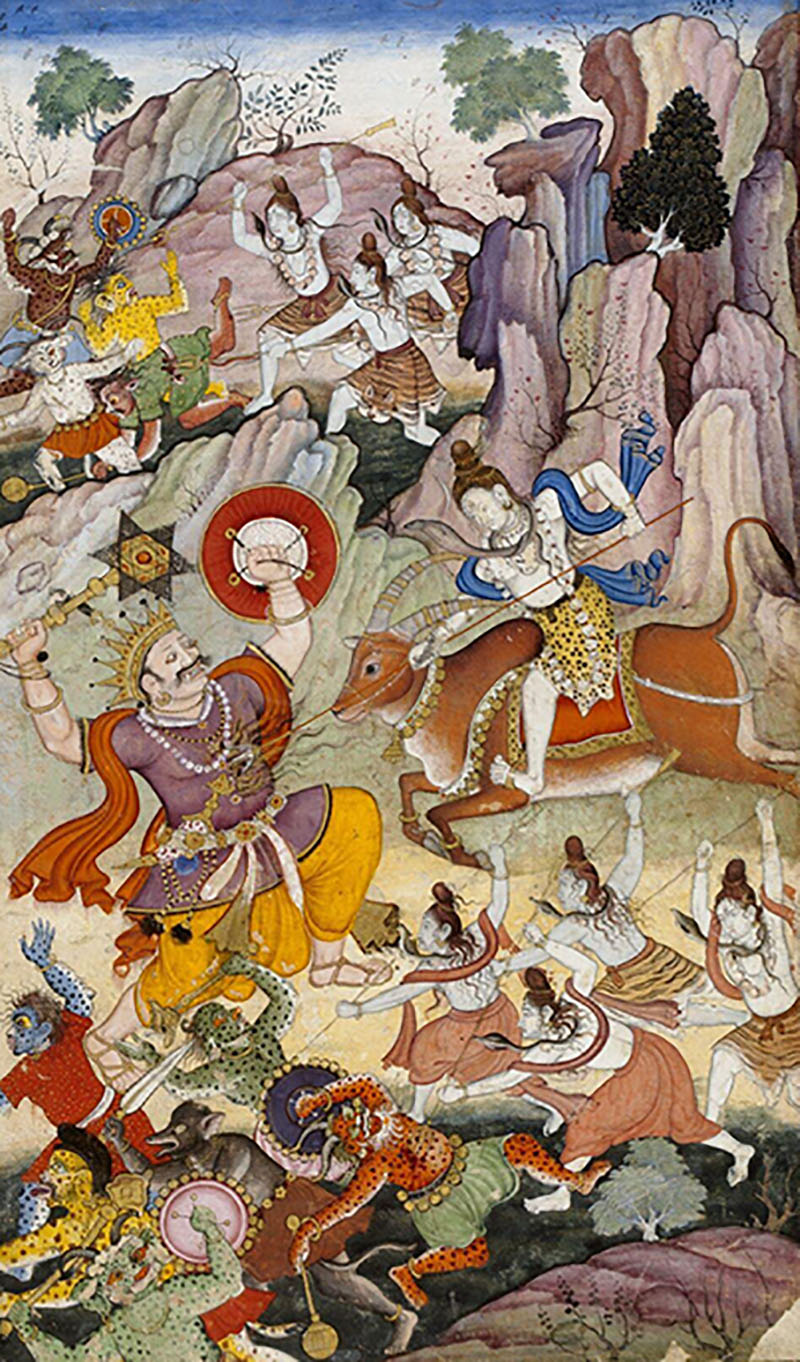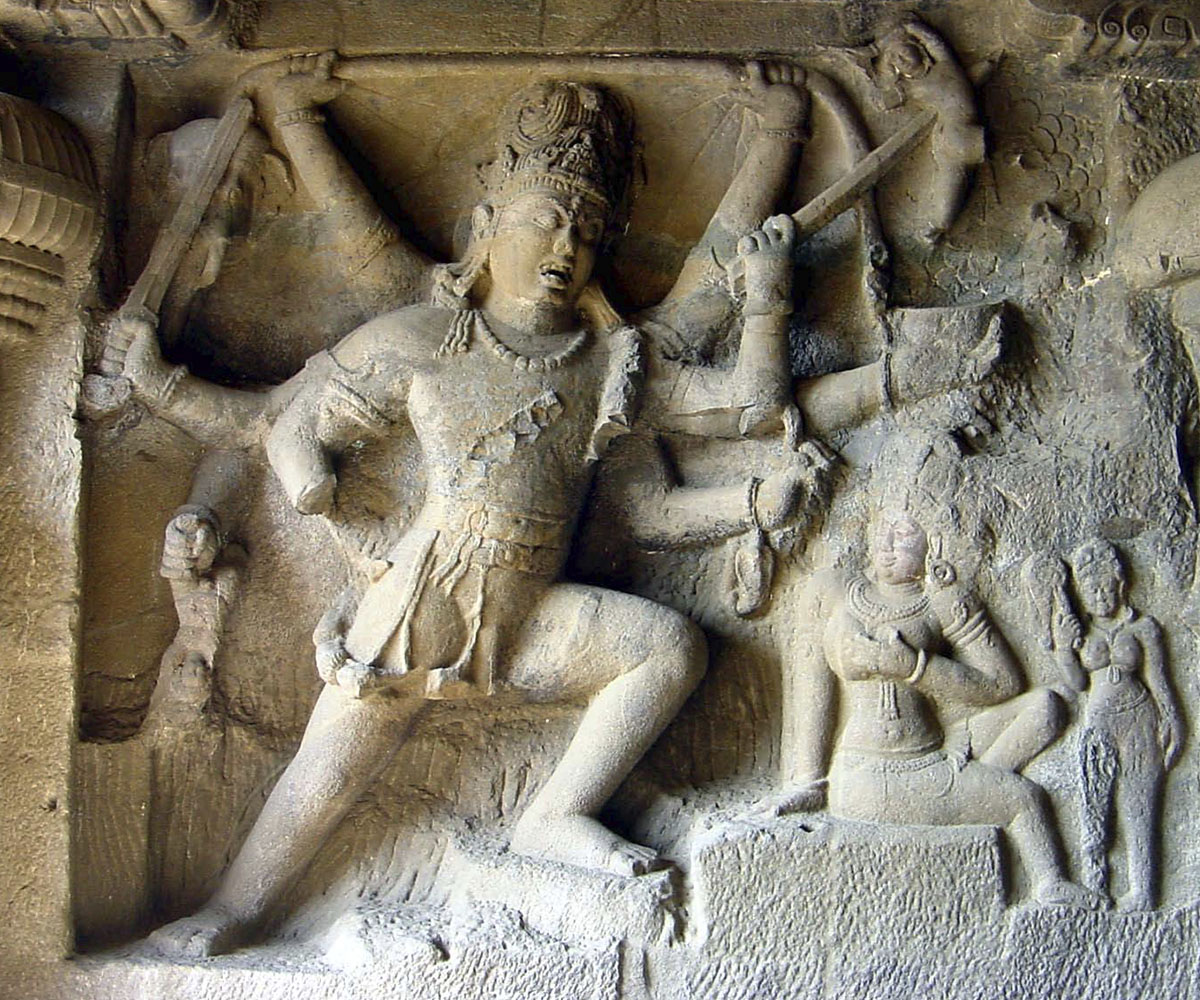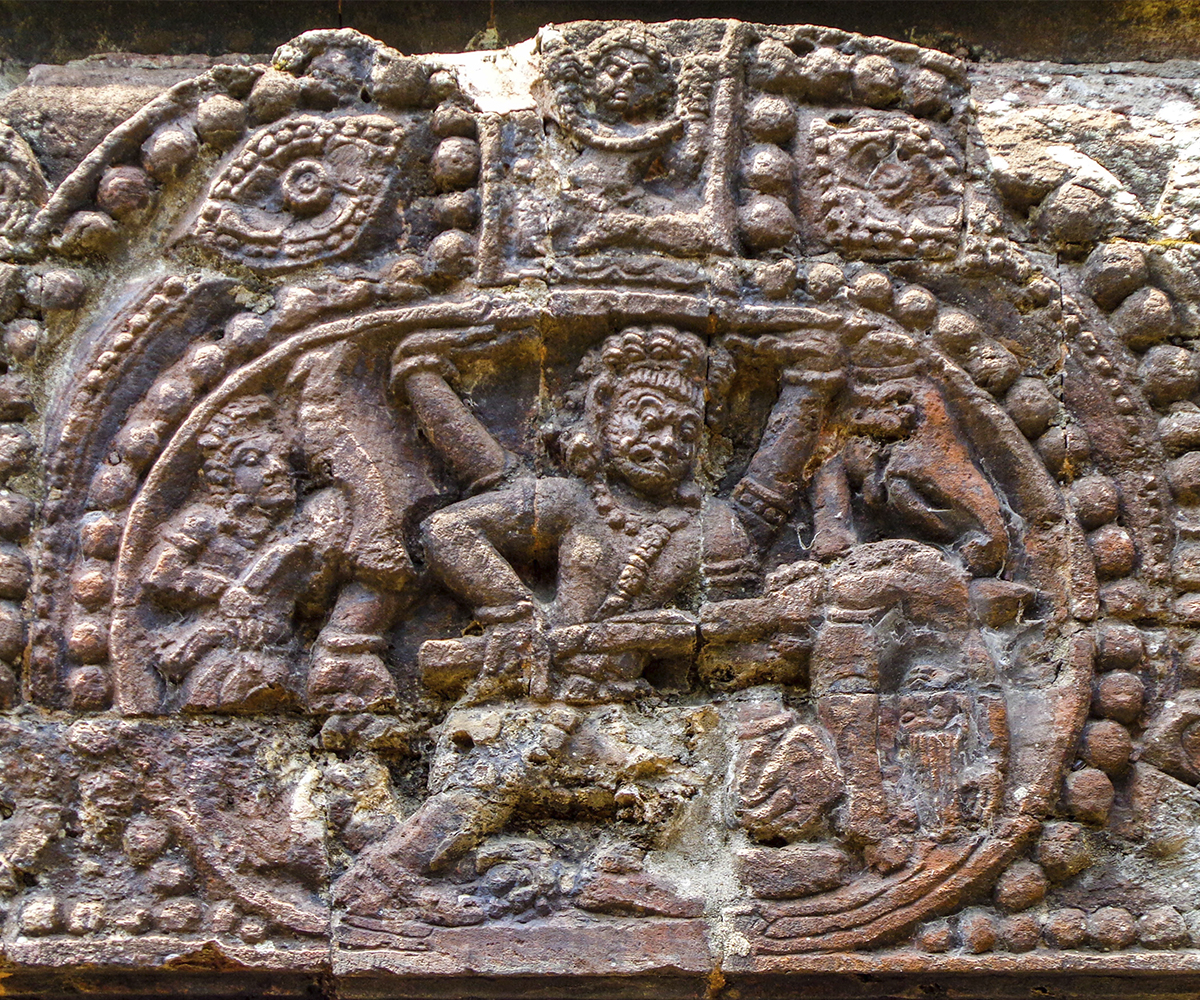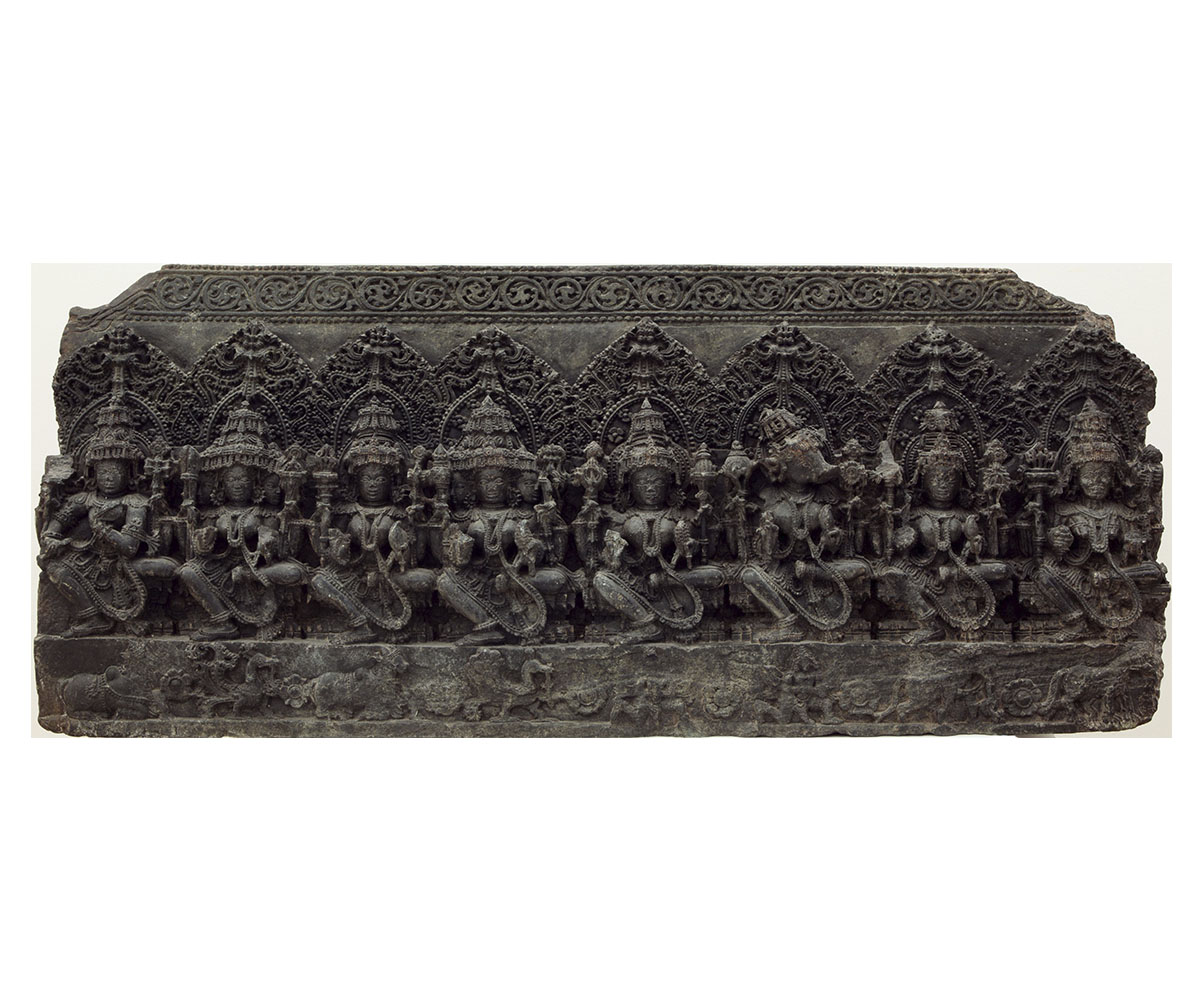ARTICLE
Andhakasuravadha
Representations of Andhaka’s death may be found at different temple sites. In Cave 16 at the Kailasanatha Temple in Ellora in present-day Maharashtra, India, a ten-armed Shiva is depicted in his terrifying aspect alongside his consort Parvati and the saptamatrikas. The sculpted panel, composed in the eighth century CE, depicts Shiva holding elephant skin. The episode is illustrated through an eight-armed Shiva in Cave 29 where Shiva bares his fangs and is depicted impaling the demon Andhaka with his weapon, whilst holding a cup underneath to contain the demon’s blood. This figure of Shiva is akin to an earlier sixth century CE depiction of Shiva slaying Andhaka at Elephanta in present-day Maharashtra, where Shiva is seen holding the demon in one of his hands. An ornately carved image of a fourteen-armed Shiva piercing Andhaka with his trident alongside a smaller image of an emaciated devi in her terrifying form is depicted in the twelfth-century Chennakeshava Temple in Belur in present-day Karnataka.
The episode of Andhakasuravadha represents the metaphorical victory of spiritual enlightenment, advanced by the combined efforts of the gods, over Andhaka, who is seen as a representation of blindness and ignorance.
Bibliography
Gupte, RS. Iconography of the Hindus, Buddhists and Jains. D. B. Taraporevala Sons & Co. Private Ltd., 1972.
Kramrisch, Stella. Manifestations of Shiva. Philadelphia: Philadelphia Museum of Art, 1981.
Rao, T. A. Gopinatha. Elements of Hindu Iconography. Vol. I. II. Madras: The Law Printing House, 1914.
———. Elements of Hindu Iconography. Vol. II. I. Madras: The Law Printing House, 1914.











